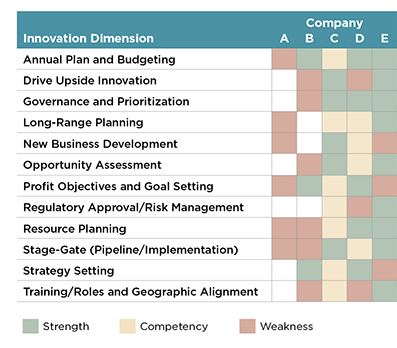The participants collectively rated themselves strongest in Governance and Prioritization and in Annual Planning and Budgeting. Of those two dimensions, however, the participants felt that Governance and Prioritization was a bigger win–that is, improvement in this area offered greater benefits to the innovation process. Other dimensions they mentioned as wins were Driving Upside Innovation and Resource Planning.
Note that Governance and Prioritization affects how effectively the organization chooses innovation projects to pursue, and Driving Upside Innovation emphasizes managing uncertainty to transform White Elephants and Bread and Butter projects into Oysters and Pearls (these project types from SmartOrg’s innovation screen are explained here). These factors directly impact the shape of the portfolio (the distribution of white elephants, bread and butter, oysters and pearls) and therefore its power to drive future revenue growth.
Monthly or quarterly check-ins makes sense operationally, but this creates a near-term focus that prevents understanding the longer-term picture. Yet the long-term prospects for opportunities don’t change that frequently. Additionally, the detail in the short-term perspective can obscure the long-term implications and scenarios.
 4 min read
4 min read
